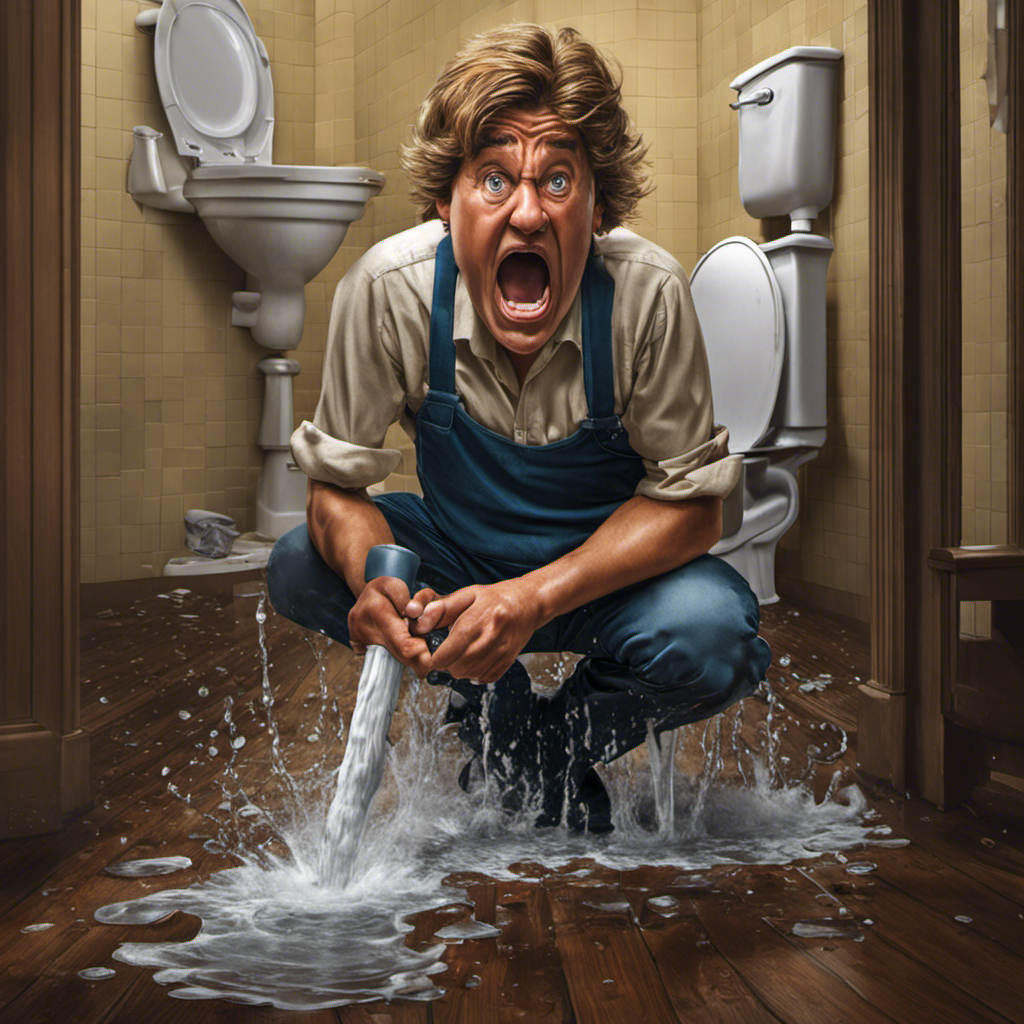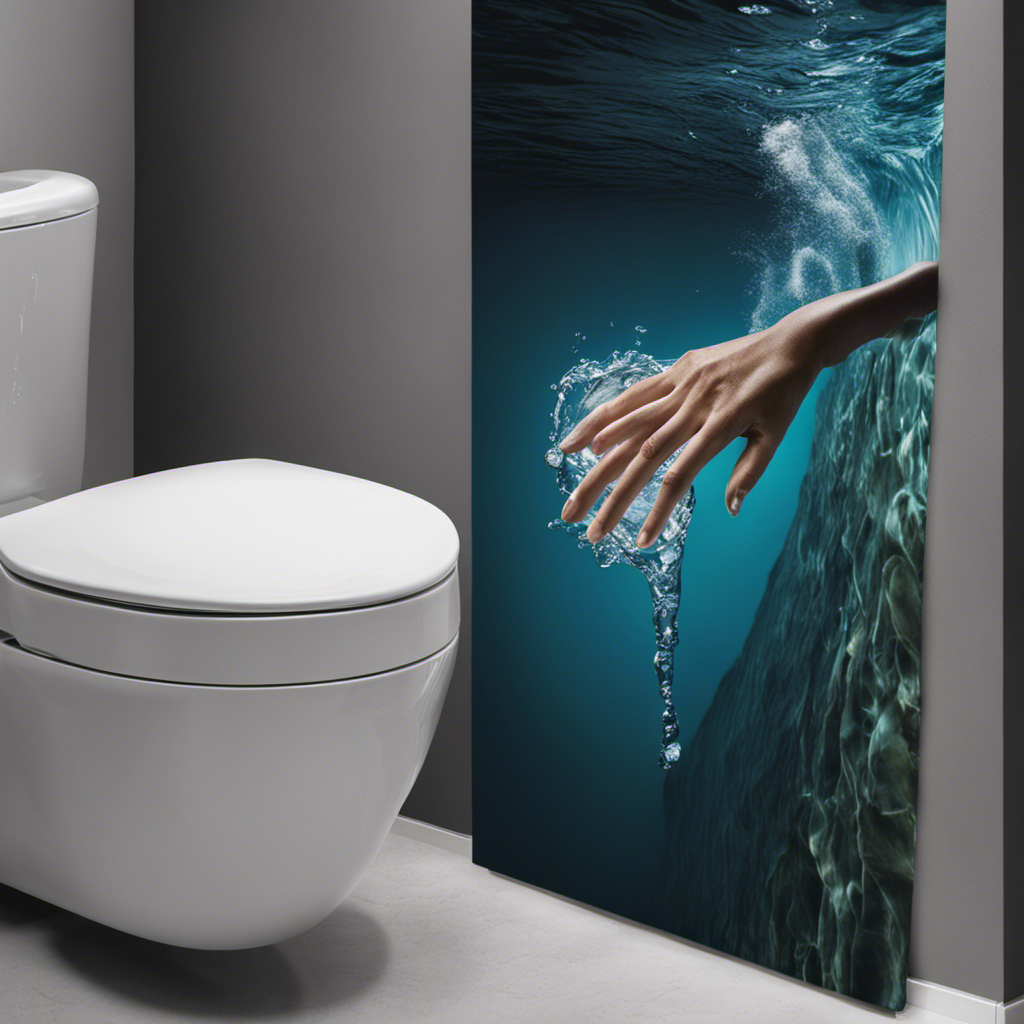Ever flushed the toilet and watched in horror as water gushes up in the shower? We’ve all been there, wondering what in the world is going on with our plumbing system.
In this article, we’ll break down the possible causes behind this perplexing phenomenon. From blocked sewer lines to ventilation issues, inadequate drainage systems to backflow prevention failures, we’ll explore the technical ins and outs of why this happens and how to fix it.
Get ready to master your plumbing troubles.
Key Takeaways
- Regular plumbing system maintenance, including inspecting and cleaning pipes, drains, and fixtures, is crucial to prevent common plumbing issues.
- Blocked sewer lines can cause water to back up and come up in the shower when you flush the toilet. Causes of blockage include septic tank overflow and tree root intrusion.
- Proper airflow within the sewer line is essential to prevent bathroom odors from escaping. Inspect the ventilation system and ensure the vent stack and vent pipe are not blocked.
- An inadequate drainage system can lead to water coming up in the shower when you flush the toilet. Regular inspections, cleaning, and maintaining the slope and alignment of pipes are necessary for proper drainage system functioning.
Plumbing System Connection
The plumbing system connection is an essential component of our homes, as it ensures the proper flow of water and waste throughout the house.

Regular plumbing system maintenance is crucial to prevent common plumbing issues that can disrupt this flow. To maintain the plumbing system, it’s important to regularly inspect and clean the pipes, drains, and fixtures.
This includes checking for leaks, repairing any damaged or worn-out parts, and clearing any clogs or blockages. Additionally, it’s recommended to use drain screens to prevent debris from entering the pipes and causing obstructions.
By taking these preventive measures, homeowners can avoid costly repairs and ensure the smooth operation of their plumbing system.
Now, let’s move on to the next section where we’ll discuss the issue of a blocked sewer line.
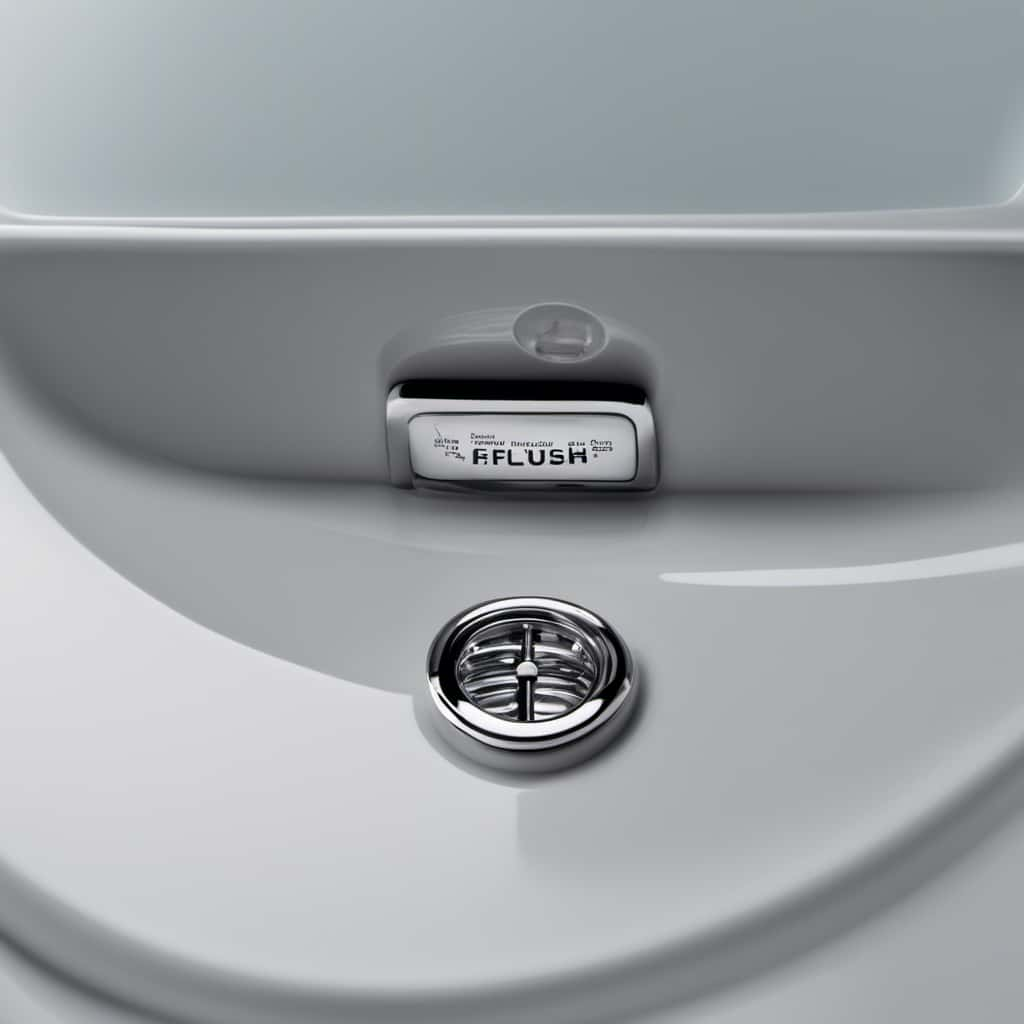
Blocked Sewer Line
When a sewer line becomes blocked, it can cause water to back up and come up in the shower when you flush the toilet. This can be a result of various factors, such as septic tank overflow or tree root intrusion.
In the case of a septic tank overflow, excessive waste and debris can accumulate, leading to a blockage in the sewer line. This can cause the wastewater to flow back into the shower drain instead of being properly directed towards the main sewer system.
Tree root intrusion occurs when tree roots grow into the sewer line, causing obstructions and preventing the proper flow of wastewater. These roots can infiltrate the pipes and cause blockages, leading to water backup and subsequent overflow.
Understanding these potential causes is crucial in addressing and resolving blocked sewer line issues.

Now, let’s move on to the next topic of ventilation issues.
Ventilation Issues
To address ventilation issues, we need to ensure proper airflow within the sewer line. This is crucial in preventing bathroom odors from escaping and causing unpleasant smells in our homes.
Here are five key factors to consider when dealing with toilet ventilation:
- Ventilation system: Check if the bathroom has a proper ventilation system in place, such as an exhaust fan, to remove humid air and odors.
- Blocked vents: Inspect the vent stack on the roof to ensure it isn’t blocked by debris or animal nests, as this can impede airflow.
- Vent pipe size: Verify that the vent pipe is adequately sized to allow proper ventilation of air and gases.
- S-traps: Replace old S-traps with P-traps, as S-traps can create a vacuum effect and hinder proper airflow.
- Sewer line cleanout: Periodically clean out the sewer line to remove any obstructions that may hinder airflow.
Ensuring proper toilet ventilation will help maintain a fresh and odor-free bathroom environment.

Inadequate Drainage System
If the drainage system in your home is inadequate, it can lead to water coming up in the shower when you flush the toilet. An inadequate drainage system may result from improper installation or neglect of maintenance.
Improper installation can occur when the pipes aren’t properly aligned or when there’s a lack of slope in the system, impeding the flow of water.
Neglecting maintenance can lead to clogged pipes or a buildup of debris, causing water to back up and come up in unexpected places, such as the shower.
Regular maintenance, including periodic inspections and cleaning, is essential to ensure the proper functioning of the drainage system and prevent water issues in the home.
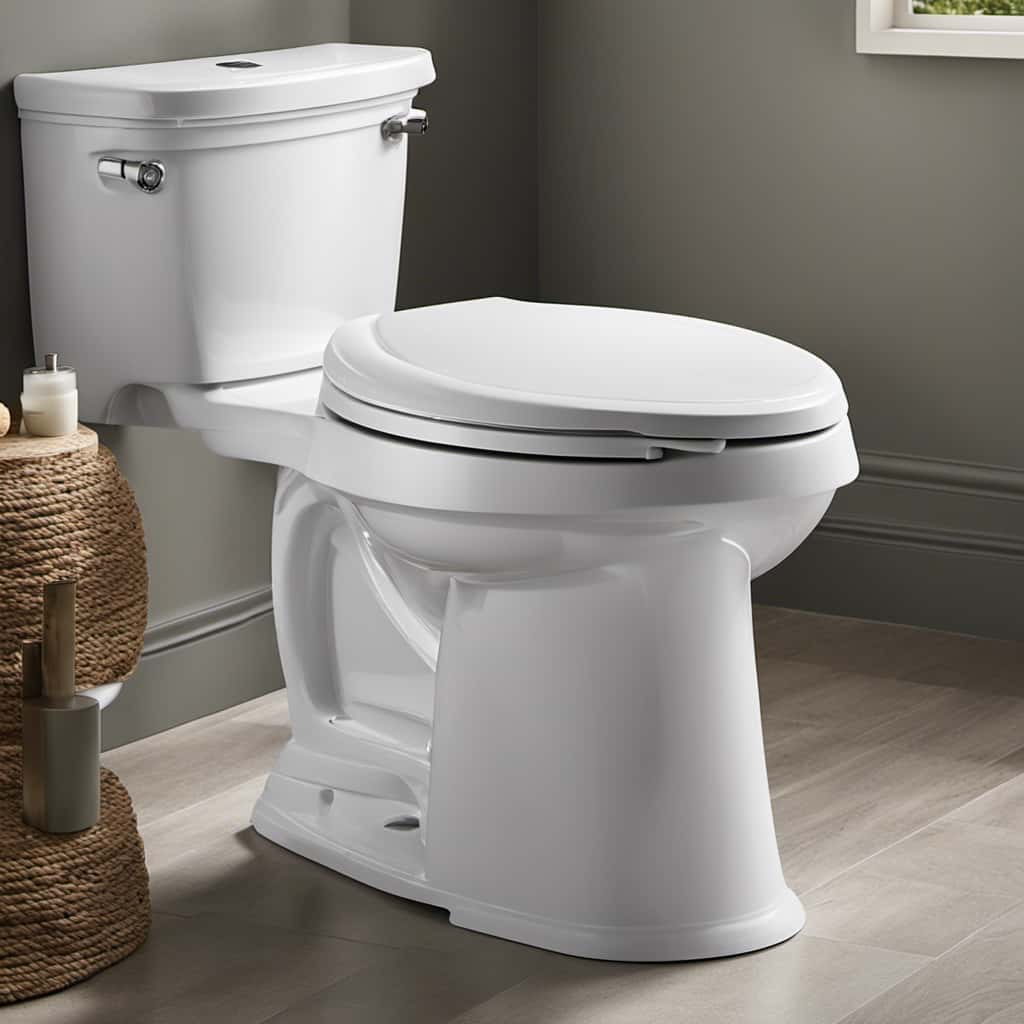
Backflow Prevention Failure
Our experience has shown that a common cause of water coming up in the shower when you flush the toilet is a failure in backflow prevention. Backflow is the undesirable reversal of water flow in a plumbing system, which can lead to contamination and damage.
Here are some common causes of backflow and backflow prevention solutions:
- Improperly installed or malfunctioning backflow prevention devices.
- High water pressure causing a backflow through faulty valves.
- Cross-connections between potable water and non-potable water systems.
- Sewer line blockages or backups.
- Inadequate maintenance and inspection of backflow prevention systems.
To prevent backflow, it’s crucial to implement proper backflow prevention solutions such as installing backflow prevention devices, ensuring regular maintenance and inspections, and addressing any cross-connections. By doing so, you can protect your plumbing system and ensure the safe and efficient flow of water throughout your home.
Frequently Asked Questions
Can Flushing the Toilet Cause the Water Level in the Shower to Rise?
Flushing the toilet can cause the water level in the shower to rise if there is a blocked sewer line or an inadequate drainage system. This issue should be addressed promptly to avoid further complications.

How Can I Tell if I Have a Blocked Sewer Line?
To determine if you have a blocked sewer line, look for signs such as slow drains, gurgling sounds, and foul odors. If you suspect a blockage, call a professional plumber to fix the issue.
What Are Some Signs of Ventilation Issues in My Plumbing System?
Signs of ventilation issues in our plumbing system include slow drains, gurgling sounds, and foul odors. These indicators suggest improper airflow, potentially leading to water backup and cross-contamination between fixtures.
What Can Cause an Inadequate Drainage System in a Home?
Clogged pipes and improper installation can lead to an inadequate drainage system in a home. These issues restrict the flow of wastewater, causing backups and potentially resulting in water coming up in unexpected places, like the shower.
How Can Backflow Prevention Failure Affect the Water in My Shower When I Flush the Toilet?
When you flush the toilet and water comes up in the shower, it means there is a backflow prevention failure. This can occur due to common plumbing problems and inadequate backflow prevention methods.
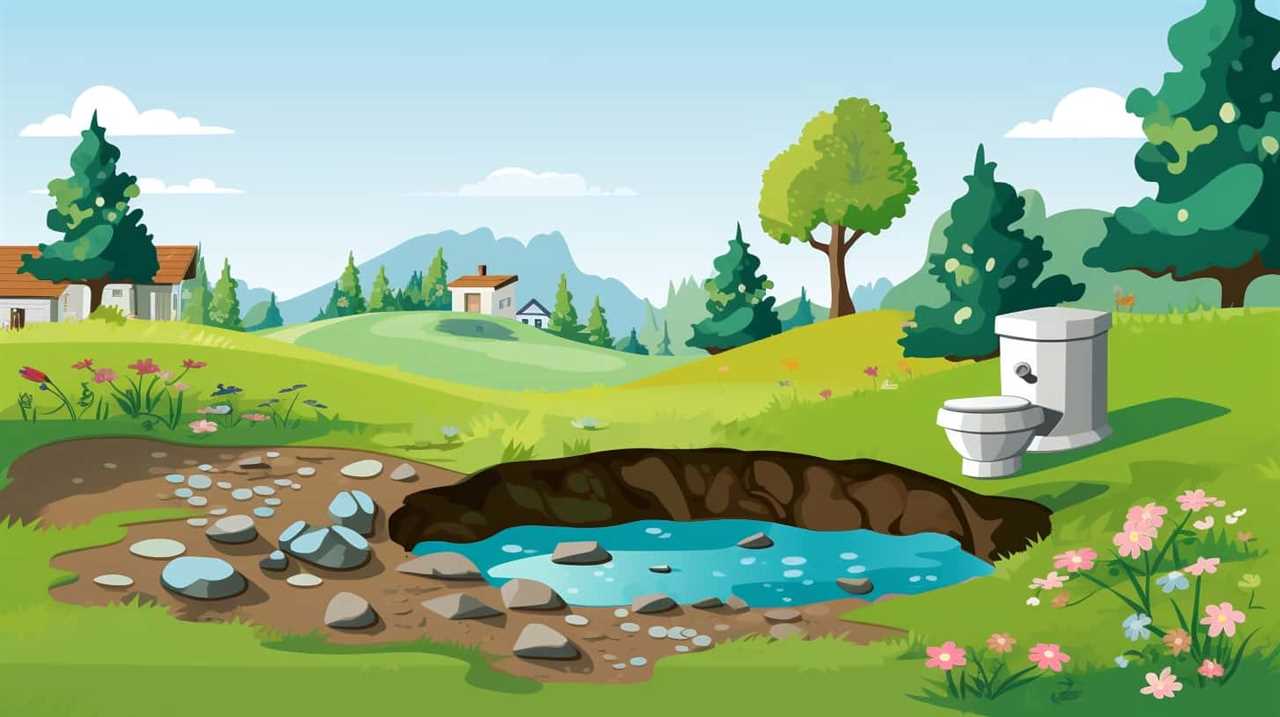
Conclusion
In conclusion, when water comes up in the shower after flushing the toilet, it’s likely due to a plumbing system connection issue, a blocked sewer line, ventilation problems, or an inadequate drainage system.
One example is a case where a clogged sewer line caused the water to back up into the shower. This highlights the importance of regular maintenance and prompt attention to plumbing issues to prevent such inconveniences and potential damage to the system.



